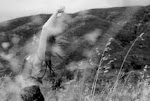
Zuccardi, Alma 4 cosecha 2010.
Argentinian Sparkling Wines
The Argentinian wine market has grown a lot in the past decade, making the choice of sparkling wines a bit difficult these days. But, no worries, we have taken the time to taste several and pick out a few bottles that we think you'll enjoy:
1) Rosel Boher Grand Cuvee Millenime: Made through Champenoise method using pinot and chardonnay grapes. Very similar to classic French champagne, it has a very complex and well developed bouquet that leaves a deep creamy taste in your palate.
2) Baron B Unique: It has a complex bouquet, fruits and toasted nuts, mainly. It delivers personality and freshness. It's fine bubbles leave a creamy taste in your palate. Not an easy sparkling wine to find, specially the 2000 version. Made with the same grapes and method of Rosel Boher.
3) Chandon: One could say a classic Argentinian, for all occasions, specially in it's Extra Brut version. Made of pinot, chardonnay and semillion grapes, under the Charmat method. It tastes fresh and fruity and has very well achieved bubbles.
4) Alma 4: The label translates as "4 Souls", it is made by four friends, actually by their four souls, we like to believe. We appreciate innovative people like them, you know? They got together to re think sparkling wines, broke a few rules of wine making and came up with a new sparkling wine. Instead of getting the grapes for the different labels from the same place, they get them from very different and geographically spread apart places and use a very interesting technique for producing it. Taste for your self and let us know if you liked it!










































